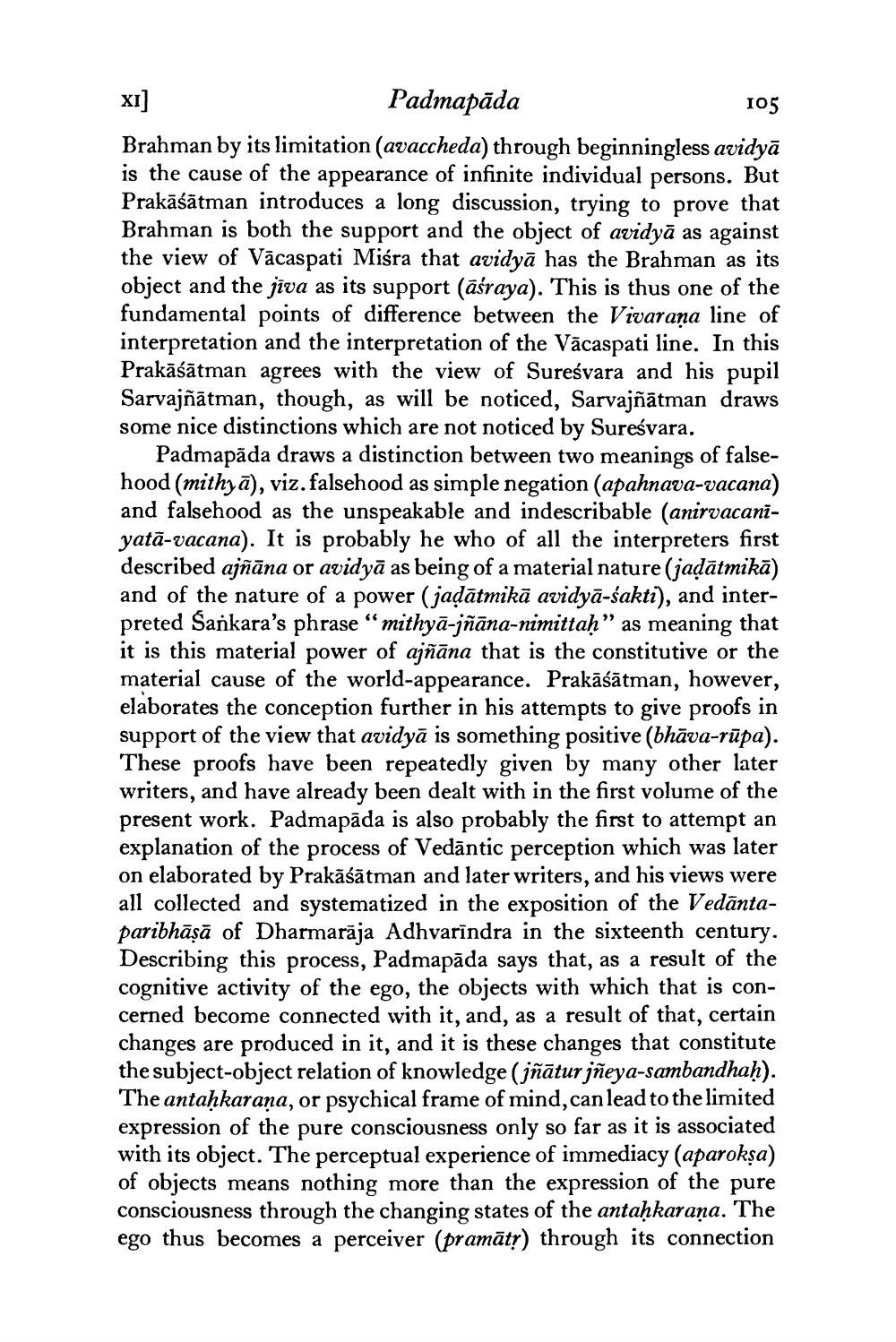________________
XI]
Padmapāda
105 Brahman by its limitation (avaccheda) through beginningless avidyā is the cause of the appearance of infinite individual persons. But Prakāśātman introduces a long discussion, trying to prove that Brahman is both the support and the object of avidyā as against the view of Vācaspati Miśra that avidyā has the Brahman as its object and the jīva as its support (āśraya). This is thus one of the fundamental points of difference between the Vivaraña line of interpretation and the interpretation of the Vācaspati line. In this Prakāśātman agrees with the view of Sureśvara and his pupil Sarvajñātman, though, as will be noticed, Sarvajñātman draws some nice distinctions which are not noticed by Sureśvara.
Padmapāda draws a distinction between two meanings of falsehood (mithyā), viz. falsehood as simple negation (apahnava-vacana) and falsehood as the unspeakable and indescribable (anirvacaniyatā-vacana). It is probably he who of all the interpreters first described ajñāna or avidyā as being of a material nature (jadātmikā) and of the nature of a power (jadātmikā avidyā-śakti), and interpreted Sankara's phrase "mithyā-jñāna-nimittaḥ" as meaning that it is this material power of ajñāna that is the constitutive or the material cause of the world-appearance. Prakāśātman, however, elaborates the conception further in his attempts to give proofs in support of the view that avidyā is something positive (bhāva-rūpa). These proofs have been repeatedly given by many other later writers, and have already been dealt with in the first volume of the present work. Padmapāda is also probably the first to attempt an explanation of the process of Vedāntic perception which was later on elaborated by Prakāśātman and later writers, and his views were all collected and systematized in the exposition of the Vedāntaparibhāṣā of Dharmarāja Adhvarindra in the sixteenth century. Describing this process, Padmapāda says that, as a result of the cognitive activity of the ego, the objects with which that is concerned become connected with it, and, as a result of that, certain changes are produced in it, and it is these changes that constitute the subject-object relation of knowledge (jñātur jñeya-sambandhaḥ). The antahkarana, or psychical frame of mind, can lead to the limited expression of the pure consciousness only so far as it is associated with its object. The perceptual experience of immediacy (aparokșa) of objects means nothing more than the expression of the pure consciousness through the changing states of the antaḥkaraña. The ego thus becomes a perceiver (pramātr) through its connection




